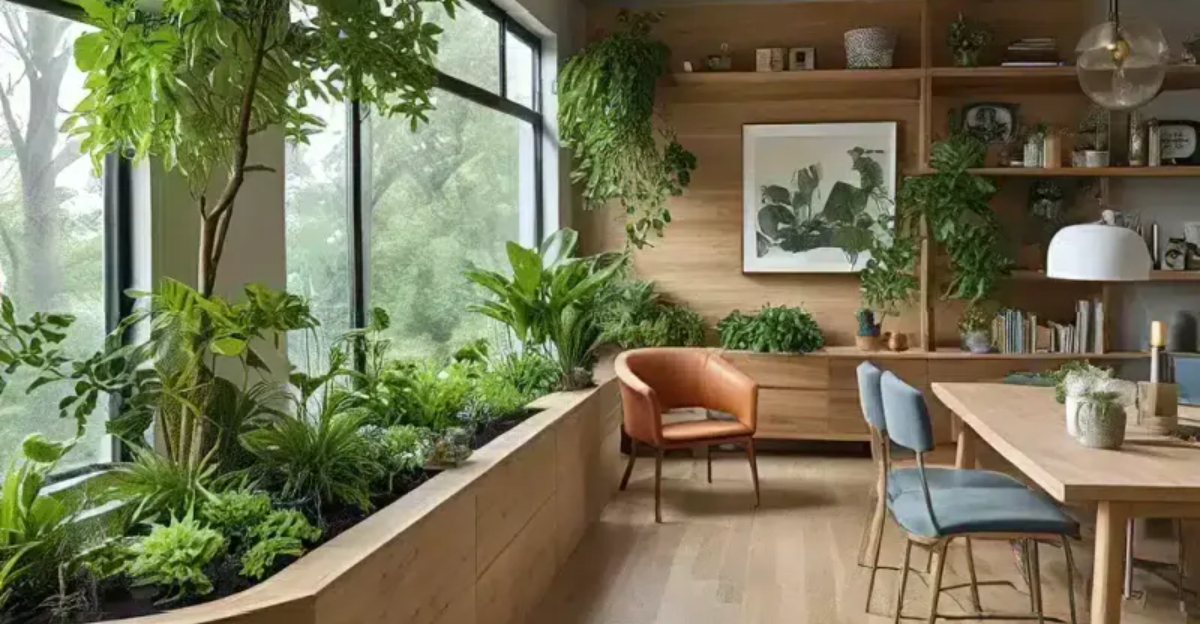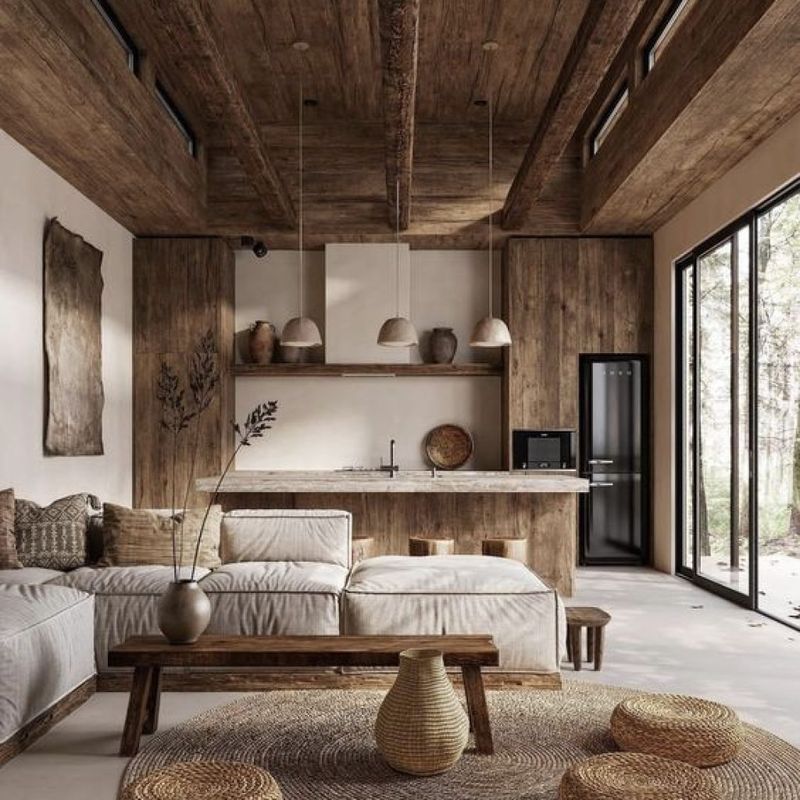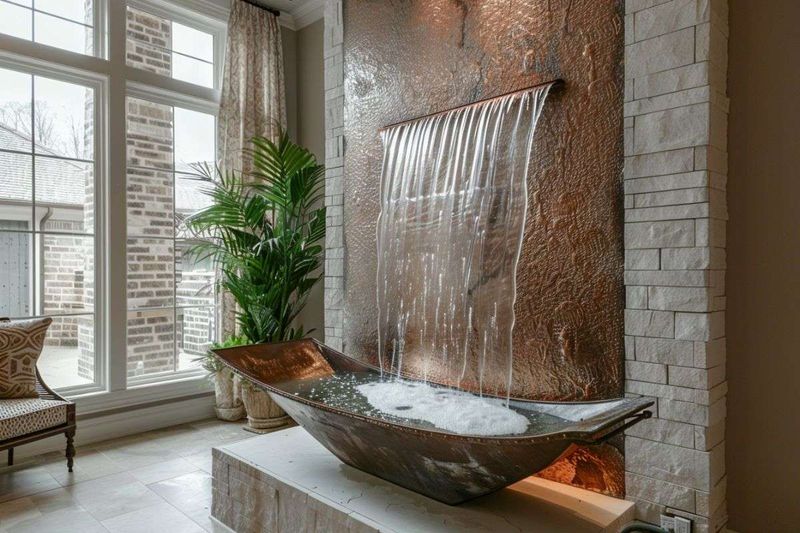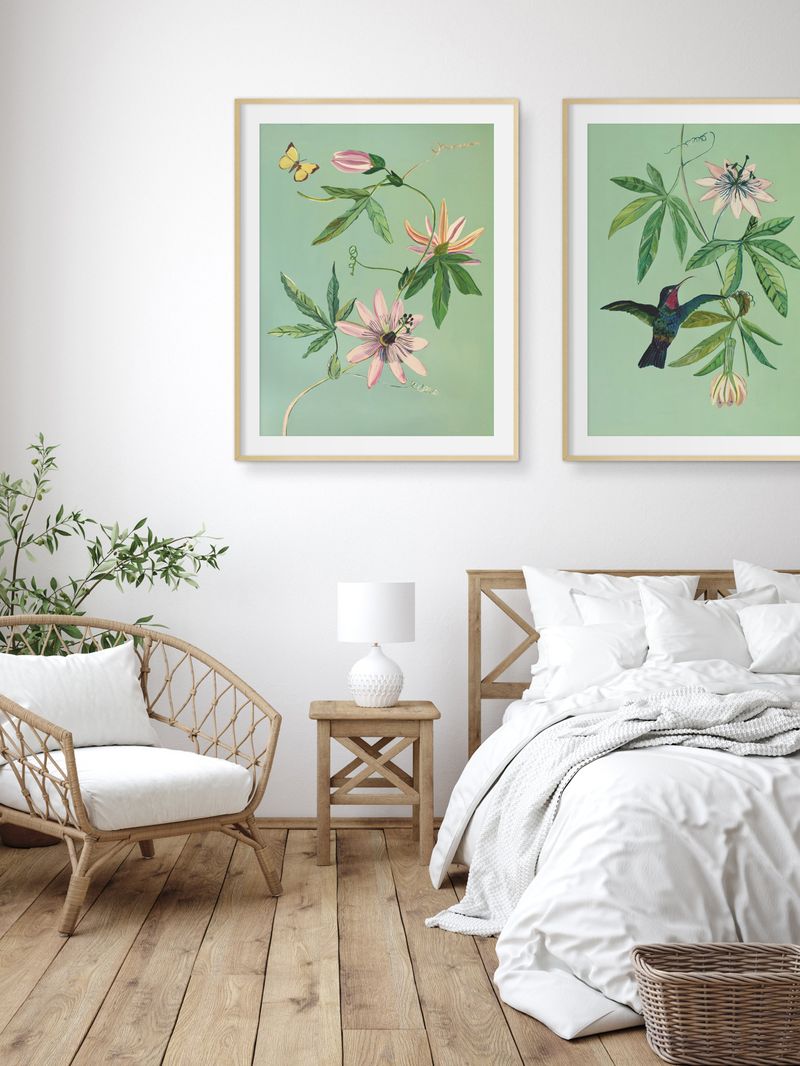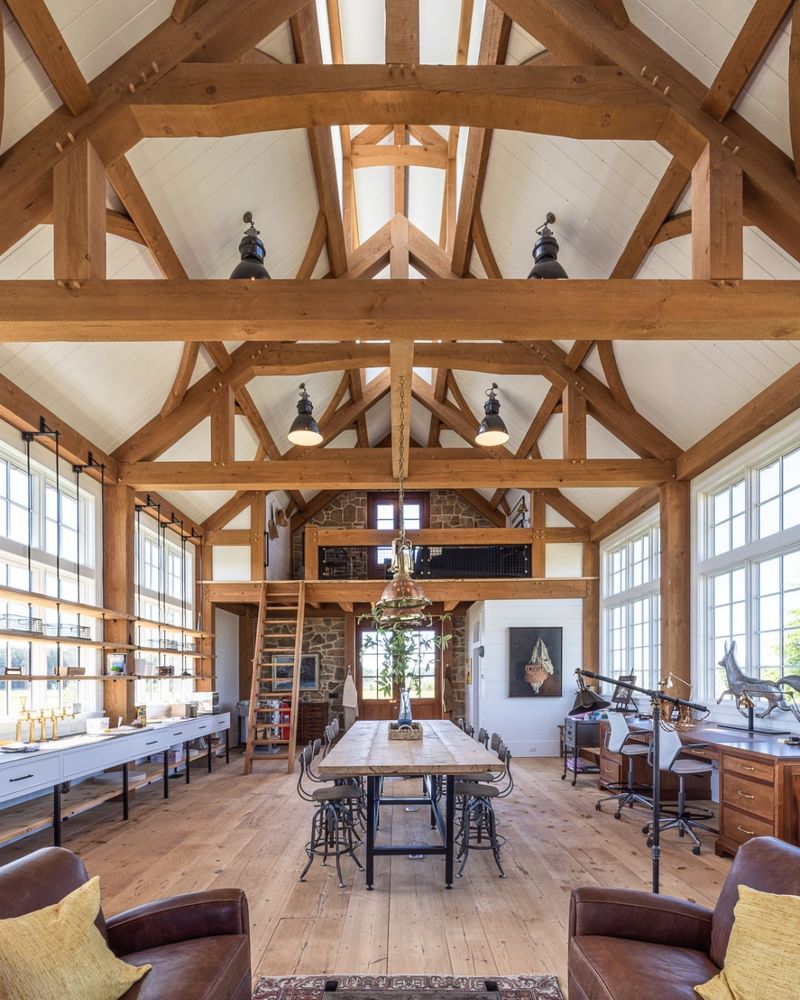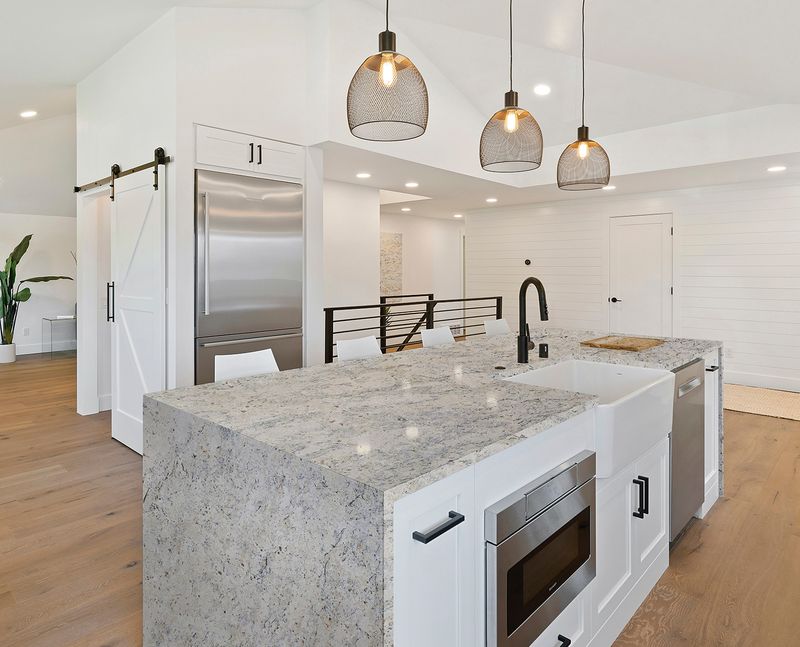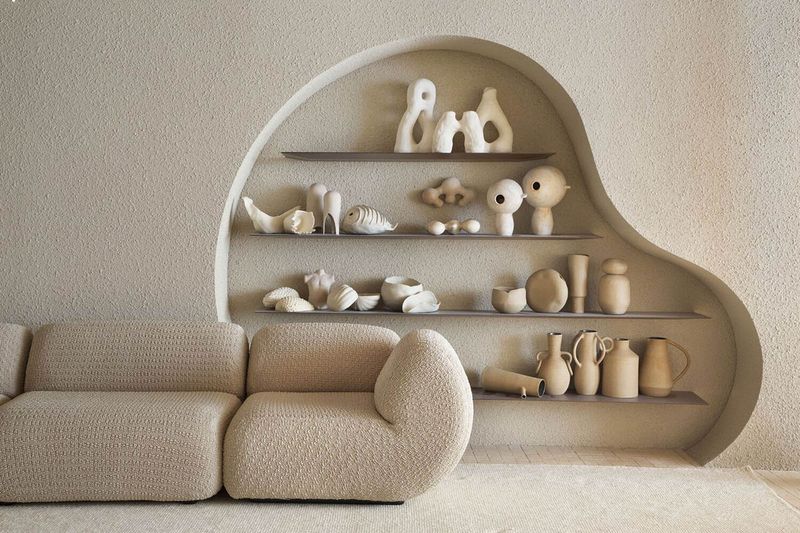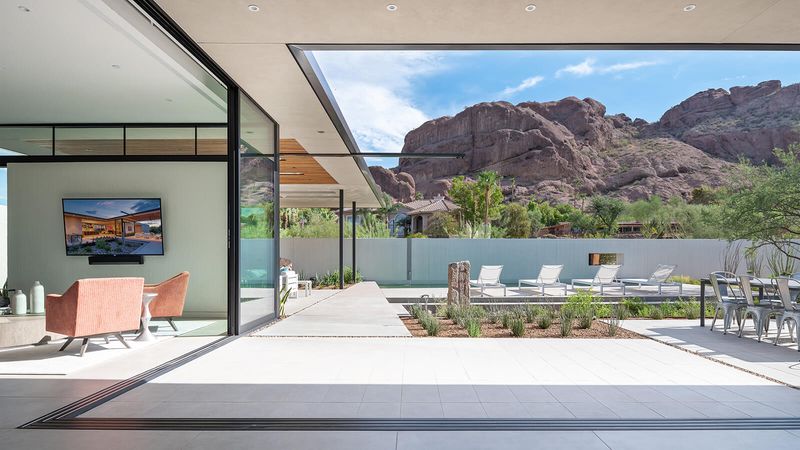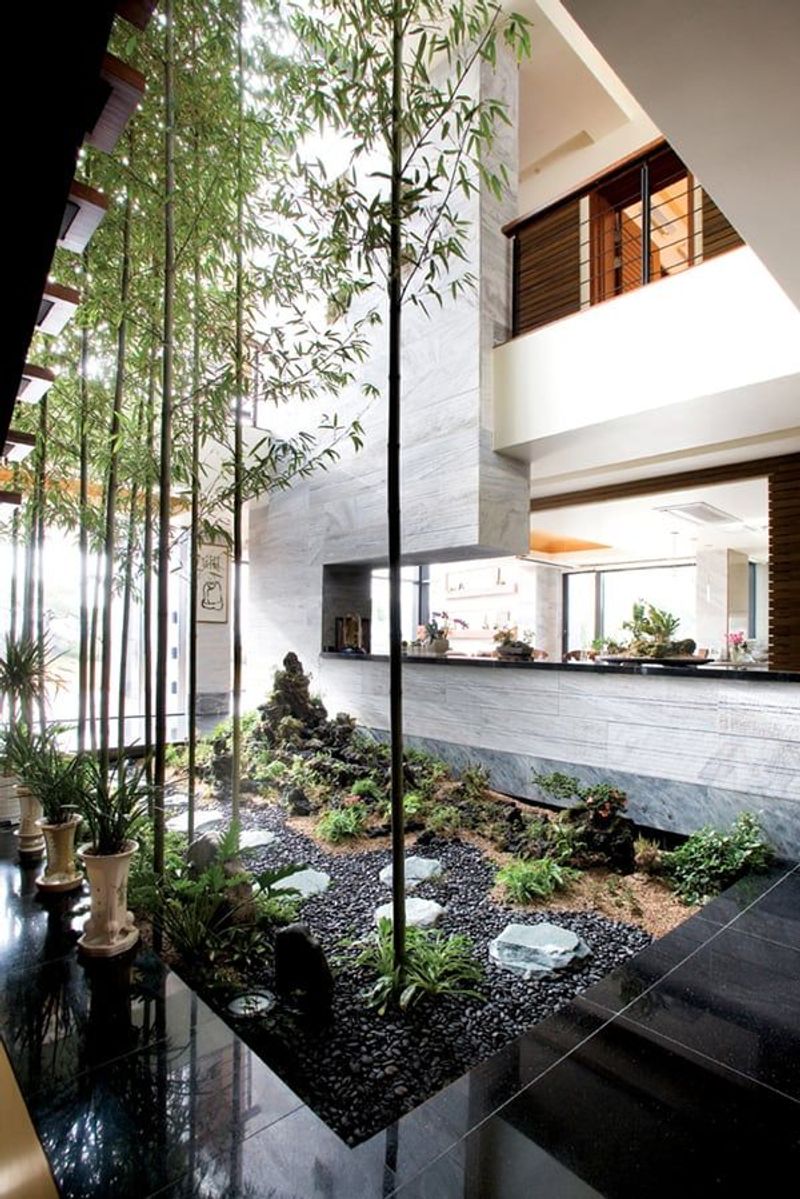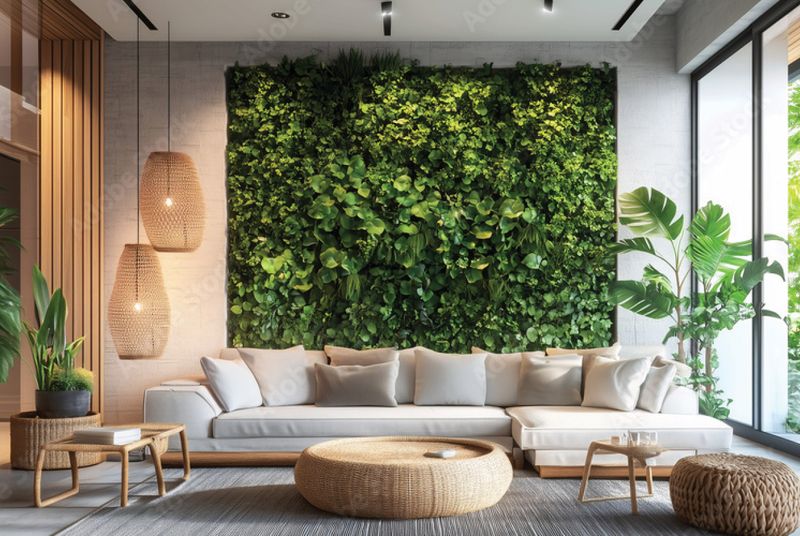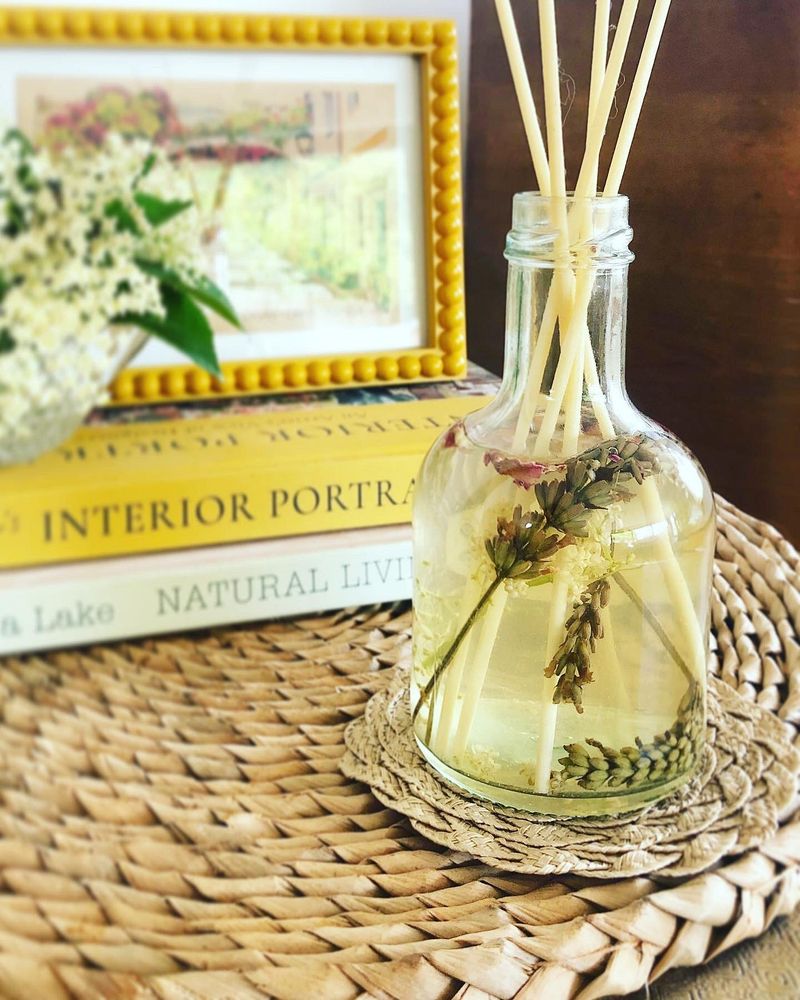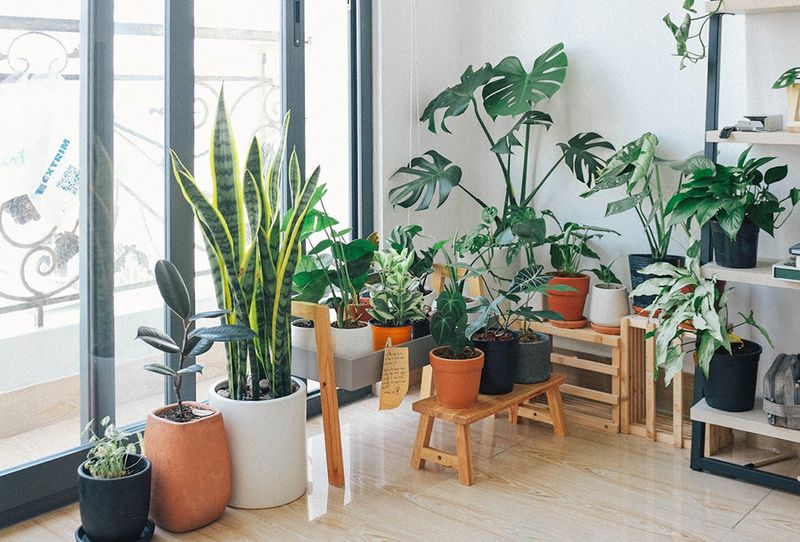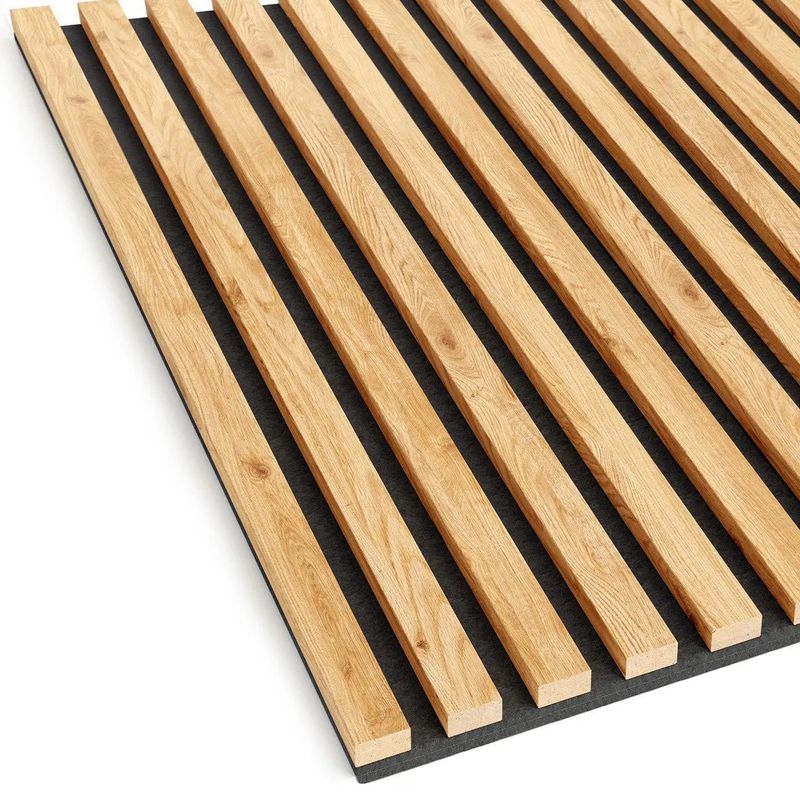Biophilic design brings the natural world into our living spaces, helping us feel more connected to the outdoors even when we’re inside.
This approach to home design isn’t just beautiful – it’s been shown to reduce stress, improve creativity, and boost our overall well-being.
Let’s explore 17 ways you can transform your home into a nature-inspired sanctuary that blurs the boundaries between indoor and outdoor living.
1. Floor-to-Ceiling Windows
What else says ‘welcome nature in’ like dramatic floor-to-ceiling windows? These architectural features frame outdoor views like living paintings that change with seasons and weather.
Beyond aesthetics, they flood rooms with natural light, reducing dependency on artificial lighting during daytime. Studies show exposure to natural light patterns helps regulate our sleep cycles and mood throughout the day.
2. Living Green Walls
Imagine a tapestry of ferns, flowering plants, and trailing vines creating a living artwork on your wall! Vertical gardens bring textural dimension while purifying indoor air.
Whether you choose a small modular system or commission a full-wall installation, these breathing art pieces become focal points in any room. They’re particularly effective in spaces lacking windows or natural views, creating that crucial connection to growing things.
3. Natural Material Furniture
Your fingers instinctively recognize the difference between plastic and a piece of polished walnut. Furniture crafted from wood, rattan, bamboo, or stone carries inherent warmth and character.
Each natural material tells its own story through grain patterns, textures, and subtle imperfections. When selecting pieces, look for sustainable options with minimal processing to maintain their authentic connection to nature. The tactile experience creates a subtle but powerful biophilic effect.
4. Indoor Water Features
The gentle burble of flowing water instantly soothes frazzled nerves after a long day. From tabletop fountains to dramatic wall cascades, water features engage multiple senses simultaneously.
The sound masks urban noise while adding humidity to dry indoor environments. For maximum biophilic impact, pair water features with natural stone or driftwood elements. Even small installations can transform the sensory experience of a room, making it feel more like a natural oasis.
5. Strategic Skylights
Ever noticed how sunshine pouring through a skylight transforms an ordinary room into something magical? These ceiling windows create dramatic light plays throughout the day as the sun travels across the sky.
Unlike regular windows, skylights capture 30% more light and distribute it more evenly. They’re particularly valuable in interior rooms lacking exterior walls. The changing quality of light throughout the day subtly reminds us of our connection to natural rhythms.
6. Nature-Inspired Artwork
Who says art can’t bring the outdoors in? Botanical prints, landscape photography, and nature-inspired sculptures provide visual connections to the natural world even in the most urban settings.
For maximum impact, choose pieces that feature local ecosystems or landscapes with personal meaning. Hand-drawn illustrations of native plants or photographs from nearby parks create deeper connections than generic nature scenes. This approach personalizes your biophilic experience.
7. Earthy Color Palettes
Colors speak directly to our primitive brains, with nature’s palette being particularly soothing. Forest greens, sandy beiges, sky blues, and stone grays create subtle biophilic connections without a single plant in sight.
Try layering different shades from the same natural family rather than using flat, single colors. The variations mimic how natural materials appear in the wild. This approach works beautifully in rental spaces where structural changes aren’t possible but nature connections are still desired.
8. Exposed Natural Wood Beams
Few architectural elements create instant warmth like exposed wooden beams overhead. Whether rough-hewn or smoothly finished, they remind us of sheltering trees and natural structures.
The linear patterns draw the eye upward, creating a sense of height while adding organic texture. Even in modern homes, reclaimed timber beams introduce historical connections and natural patina. Their visual weight grounds spaces that might otherwise feel too sleek or sterile.
9. Stone Surface Elements
Running your hand across a granite countertop or limestone tile connects you directly to earth’s geological processes. Stone surfaces bring unmatched tactile pleasure and visual complexity to everyday interactions.
Each piece contains millions of years of natural history in its patterns and mineral compositions. Beyond countertops, consider stone flooring in entryways, pebble shower floors, or feature walls of stacked stone. These elements create microclimates that naturally cool spaces in summer and radiate stored heat in winter.
10. Organic Shapes and Forms
Why do curved furniture pieces and irregular forms feel so inviting? Our brains evolved in environments without perfect straight lines or identical repetitions.
Furniture with organic curves, asymmetrical arrangements, and varied textures mimic natural landscapes. Look for pieces with flowing lines rather than rigid geometries. Even small touches like irregularly shaped bowls or hand-thrown pottery bring subtle biophilic elements to everyday objects, creating visual comfort through their natural variability.
11. Sliding Glass Door Systems
Remember that feeling when someone opens all the doors at a beach house? Modern sliding glass systems recreate this by temporarily erasing the boundary between indoors and out.
Unlike traditional doors, these systems can span entire walls, pocketing away completely when open. The resulting connection transforms how spaces function and feel. Even when closed during extreme weather, the transparent barrier maintains visual connection.
12. Interior Courtyards
Ancient civilizations understood the magic of courtyards—protected outdoor spaces embraced by the building itself. These architectural oases create microenvironments where indoor comfort meets outdoor experience.
Even small homes can incorporate courtyard concepts through strategic planning. The resulting spaces become natural focal points visible from multiple rooms.
13. Tactile Natural Textures
Your fingertips can distinguish thousands of textures, making touch one of our most powerful connections to the natural world. Incorporating varied natural textures activates this sense throughout your home.
Mix rough jute rugs, smooth polished wood, nubbly linen upholstery, and irregular stone surfaces within the same space. This sensory layering creates subconscious connections to diverse natural environments.
14. Botanical Scent Strategies
Scent bypasses conscious thought, triggering immediate emotional responses and memories. Essential oils from plants, beeswax candles, and even certain woods naturally scent spaces while avoiding synthetic chemicals.
Consider seasonal rotations—pine and cedar in winter, floral notes in spring, herbaceous scents in summer. These olfactory connections to nature work subconsciously, strengthening biophilic impacts even when other elements aren’t visible.
15. Strategic Plant Placement
Houseplants aren’t just decorative—they’re living air purifiers that respond to their environment. Strategic placement maximizes both their visual impact and practical benefits.
Position oxygen-producing plants like snake plants in bedrooms, humidity-loving ferns near showers, and hardy succulents in sunny windowsills. Create plant vignettes at eye level in frequently used spaces rather than relegating them to corners.
16. Framed Nature Views
Just as artists carefully compose landscapes within frames, thoughtful architecture creates “picture windows” that perfectly capture outdoor views. These framed vignettes bring focused nature connections into specific rooms.
Consider what’s visible from beds, dining tables, and work areas—places where you spend extended time.
17. Natural Acoustic Elements
Hard surfaces in modern homes create echo chambers that feel distinctly unnatural to our ears. Wood panels, cork flooring, wool textiles, and plant materials absorb and diffuse sound in ways similar to natural environments.
These materials create the subtle background acoustic properties we evolved with. Consider installing wooden slat walls, woven ceiling elements, or cork panels that provide visual warmth while improving the acoustic experience.

